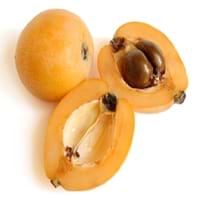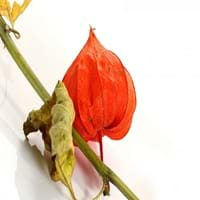Health Benefits
Cancer prevention, Heart care, Reduces nervous tension, Reduces blood circulation problems, Reduces stress, Regulation of heart rate, Strengthening of bones
Anti-oxidant properties, Anti-inflammatory properties, Cancer prevention, Maintains healthy cholesterol level, Reduces blood circulation problems, Treatment of cough, fever & sore throat, Treatment of Hypertension
General Benefits
Anti-inflammatory properties, Controls blood pressure, Digestive aid, Eye care, Helps in weight loss, Improves eye vision, Maintains healthy cholesterol level, Strengthens bones
Treatment of asthma, Treatment of cataract, Treatment of hepatitis, Treatment of macular degeneration, Treatment of neurodegenerative diseases
Skin Benefits
Anti-aging benefits, Reduces wrinkles, Treatment of dark spots, Treatment of skin diseases
Treatment of Rheumatism & Dermatitis, Treatment of Skin Inflammation
Hair Benefits
Protects hair
Unknown
Allergy Symptoms
Diarrhea, Itching of mouth, Nasal congestion, Sneezing, Swelling of face, Watery eyes
NA
Side Effects
Allergic reaction
Hypertension, Ventricular Tachycardia
Best Time to Eat
Along with meal, As a snack in the late afternoon, Don't consume at night and before bed, Morning time (before lunch)
As a snack in the late afternoon, Eat the fresh ones, avoid mixing with any other foods, don't eat after meal., Morning time (before lunch), Strictly avoid empty stomach
Vitamin B6 (Pyridoxin)
Not Available
Vitamin B9 (Folic acid)
Not Available
Vitamin C (Ascorbic Acid)
Not Available
Vitamin E (Tocopherole)
Not Available
Phytosterol
Not Available
Water Content
Not Available
Calories in Fresh Fruit with Peel
Calories in Fresh Fruit without Peel
Not Available
Not Available
Calories in Frozen Form
Not Available
Not Available
Calories in Dried Form
Not Available
Not Available
Calories in Canned Form
Not Available
Calories in Juice
Not Available
Calories in Jam
Not Available
Calories in Pie
Not Available
Type
Tree fruit, Tropical
Fruit vegetable
Season
Winter
Spring, Summer
Varieties
Ahdar, Ahmar, Asfar, Blush, Champagne, Early Red, Eulalia, Fire Ball, Golden Red, Golden Yellow, Oliver, Thales, Thames Pride, Victor and Wolfe
Physalis franchetii, Physalis pruinosa, Physalis peruviana, Physalis heterophylla and Physalis philadelphica
Color
Orange, Yellow
Bright Yellow, Orange
Inside Color
Orange
Orange
Soil Type
Clay, Loam, Sand, Well-drained
NA
Climatic Conditions
Warm to hot climate
NA
Facts about
- Loquats are used in plum wine manufacturing.
- Dried leaves of loquat are used to make herbal tea.
- The seeds of loquat are slightly toxic & the symptoms of intoxication are nausea, vomiting & shortness of breath.
NA
Other Countries
Brazil, Chile, China, Egypt, Israel, Italy, Morocco, Pakistan, Portugal, Spain, Turkey
NA
Top Importer
China
Netherlands
Top Exporter
Spain
Colombia
Botanical Name
Eriobotrya japonica
Physalis Peruviana
Synonym
Crataegus bibas or Mespilus japonica or Photinia japonica
Alkekengi, Herschellia & Pentaphitrum
Subkingdom
Tracheobionta
Tracheobionta
Division
Magnoliophyta
Magnoliophyta
Class
Magnoliopsida
Magnoliopsida
Subclass
Rosidae
Asteridae
Family
Rosaceae
Solanaceae
Genus
Eriobotrya
Physalis
Species
E. japonica
Physalis
Generic Group
Rose
Not Available
Compare Loquat and Physalis
It is important compare Loquat and Physalis as both the fruits have a different nutritional value. Their comparison can be done on the basis of their vitamin and mineral content, calories, benefits as well as characteristics, making it easier for us to choose the best fruit for our diet. Their general health benefits are as follows:
Loquat Benefits: anti-inflammatory properties, controls blood pressure, digestive aid, eye care, helps in weight loss, improves eye vision, maintains healthy cholesterol level and strengthens bones.
Physalis Benefits: treatment of asthma, treatment of cataract, treatment of hepatitis, treatment of macular degeneration and treatment of neurodegenerative diseases.
Fruits are also used as a remedy for various hair problems. The hair benefits of Loquat are: protects hair and hair benefits of Physalis are: unknown. Some fruits are known to cause allergic reactions. The allergy symptoms of first fruit are: diarrhea, itching of mouth, nasal congestion, sneezing, swelling of face and watery eyes and the symptoms of second fruit are: na. Get sorted Loquat vs Physalis comparison with the help of fruit comparison tool by fruitvs.com.









